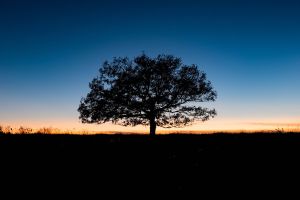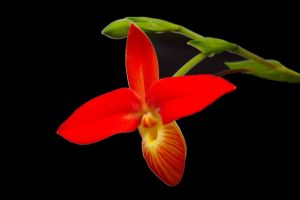The Art of Exclusion in Photography
Photography is as much about what we exclude from the frame as it is about what we include. To create a compelling image, it is as important to exclude what is not wanted in the image as well as what is wanted. If not enough elements are excluded, then too much is introduced into the image and the impact of the elements in the image is diluted.
Learning to isolate the subject is an important part of the art of exclusion. By isolating the subject, it is made more prominent than other elements, giving it greater visual mass and diminishing distractions.
Using point of view is the first and most obvious way to isolate elements in the image. Where you stand and the position of your camera determines what appears and does not appear in front of, around and behind the subject. While changing positions doesn’t always reduce or eliminate background “noise” or unwanted elements, sometimes it is all that is needed to remove those elements from the image. Remember to do what some photographers refer to as “border patrol” – and scan the perimeter of your frame for any unwanted items and make adjustments accordingly.

Angel, Rouen Cathedral, Rouen, France
When changing the point of view is not preferable because it will change the perspective or the lighting in the image, try changing the angle of view, which is all about which lens is chosen. A wide-angle lens will include a lot in the image while a telephoto lens will create a much narrower field of view. The telephoto lens would be the more obvious choice in creating a more isolated subject but a wide-angle lens can also be used by coming in closer to the subject to enlarge it while diminishing the rest.

Tree at Sunset, Big Meadows, Shenandoah National Park
Another isolation technique is to use motion. When the subject is moving, use a slower shutter speed and pan the camera to create a sharp image against a blurred background. Conversely, when the subject is static but the background is in motion, focus on the subject and let the movement in the background create the motion blur.

Geese Flying across the Potomac River
Using a shallow depth of field can also be used to isolate subjects by creating a softer background which does not compete with the subject. As was noted in the article about lens compression, the camera-to-subject distance is important! Depending on how close the camera is to the subject will determine how much of the background is in focus and how close it appears to the subject.

Blue Poppy, Butchart Gardens, Victoria, British Columbia, Canada
Lighting can also be used to isolate the subject by blowing out the background or using shadows behind the subject give the subject greater visual mass.

Orchid, Longwood Gardens, Kennett Square, Pennsylvania
Try isolating your subject to give it greater power within the frame!
Photos by Sherryl Belinsky
